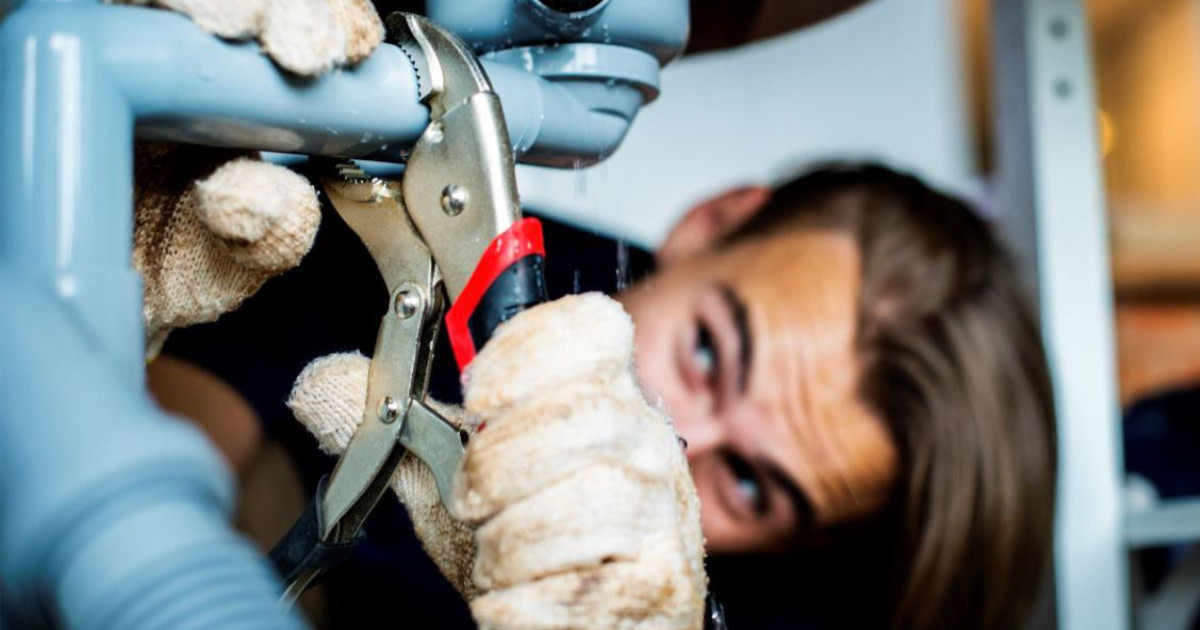10 Homeownership Costs You Might Not Expect

So, you’re thinking of buying your first home. You’ve probably budgeted for the monthly mortgage payment that you’re comfortable spending. But what about those costs you maybe haven’t considered?
My husband and I just purchased a home, and I have quickly learned that the price of owning a home includes several expenses (often recurring) that are not so obvious. While these extras shouldn’t deter you from homeownership, it makes budgeting a lot easier if you’re aware of these things in advance.
1. Property taxes
Your local government charges real estate taxes to pay for public expenses, such as parks, schools, etc. The seller, seller’s agent, or often the MLS listing should be able to tell you what the current annual taxes are on your potential property. You can then take the annual fee, divide by 12, and you’ll know your estimated monthly payment. But keep in mind, these taxes may potentially increase.
2. Insurance
It costs much more to insure an entire home than an apartment. So even if you’re familiar with paying renter’s insurance, be prepared for the increase. Your home’s location also plays a role. If you live in an area prone to hurricanes, flooding, earthquakes, or other natural disasters, you may be paying even more for this added coverage.
3. HOA or condo fees
When I started looking for a house, I fell in love with a specific neighborhood. The lawns were well manicured, the walking paths were pristine, and the pride of ownership was evident in each of the homes. Well, that was because this neighborhood was part of a homeowners association. When you buy into certain developments, you may have an additional monthly fee. These added costs typically go towards services that benefit the entire community, such as maintaining common areas or access to facilities.
4. Utilities
You may be used to paying bills such as electricity, gas, cable, internet etc., but don’t get caught off guard by a potential increase in these common expenses. If you’re increasing your square footage or changing utility companies, you might need budget more for these items.
5. Moving
Even if you have several helpful friends and family member, chances are you still may need to purchase boxes, rent a moving truck, or hire a professional moving company. Don’t forget to consider these costs, which can vary depending on distance of move, size of move, and packing. According to the American Moving & Storage Association, the average person spends over $1,000 on a move.
The average cost to move within the same state is $1,170. Meanwhile, the average for moving across state lines is $5,630.
6. Furniture
Many moves come with additional rooms to furnish and decorate. Beds, tables, chairs, and lamps can add up quickly. You may also be tempted to update some of your existing furnishings, so consider these additions and upgrades in the budget.
7. Cosmetic changes
There’s a good possibility that your tastes may not match perfectly with the tastes of the home’s previous owner. The great news is that can quickly update the look and feel of a house with only minor cosmetic changes, such as paint color or updated pulls and knobs. However, the price of those little fixes can add up fast.
8. Yard
If you’re used to renting, you might be unfamiliar with caring for a lawn. First, you’ll probably need to invest in a lawn mower or pay for a professional lawn care service. Next, you’ll also want to consider the cost of fertilizers, plants, and landscaping to keep your yard looking its best. And lastly, if you’re yard has trees, be mindful that caring for your lawn includes leaf removal as well. If you choose to hire someone to maintain your lawn, Angie’s List reports that average yard costs $35-50.
Therefore, you could spend $800 to $1,000 during the five month mowing season, if you hire a professional for lawn services such as mowing, trimming, edging, and debris removal.
9. Ongoing maintenance
Owning a home simply comes with more responsibility that renting. Cleaning gutters, powerwashing siding, cleaning the chimney, replacing loose roof shingles, patching the driveway, and replacing furnace filters are just a few of the regular, recurring maintenance required when owning a home.
10. Repairs
In addition to the regular maintenance, you’ll also need to be prepared for home repairs, both minor and major. There’s no way around it; at some point, you may have plumbing or electrical problems, the roof may need to be replaced, or the garage door will stop working. Big items like the washer, dryer, or AC unit may break. Be sure to have a reputable home inspection prior to buying a house, and this should help minimize your risk or help you prepare for these big ticket items. Sounds scary, right? Of course it is. But at the end of the day, imagine the independence and sense of accomplishment you’ll feel when owning your piece of the American dream.